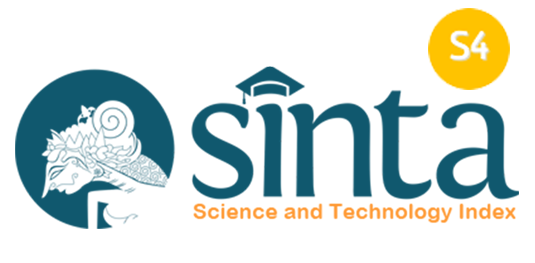NURSING CARE OF HYPERTHERMIA IN CHILDREN FEBRILE SEIZURES: A CASE REPORT
Downloads
Introduction: Febrile seizures occur due to increased temperature due to extracranial processes. There is a predisposition Familial and more common in boys than girls. Prolonged and repeated attacks can cause severe disturbances in the child's brain, so the child has a mental disability. This case study aims to apply hyperthermia nursing care for children with febrile seizures in the pediatric inpatient room at Lamongan Hospital. Methods: The research design used is to study cases with a nursing care approach. The sample in this study was one child patient with febrile seizures: data collection techniques using interviews, observation, documentation studies, and physical examination. The research instrument used the pediatric nursing care assessment format. Results: After implementing nursing for 3x24 hours, the nursing diagnosis of hyperthermia is resolved. The risk of injury does not occur during the treatment period because the body temperature has reached 36.5 0 C, and the patient has never had another seizure. Conclusions: It is necessary to collaborate with professional care providers and family participation for the success of nursing care according to nursing care standards to prevent happening seizures repeated.
Arief, Rifki F. (2015). Management of febrile seizures. Continuing Medical Education 42(9).
Departemen Kesehatan RI. (2017). Profil Kesehatan Indonesia. Jakarta: MOH RI.
DPP PPNI. (2018a). Standart Diagnosis Keperawatan Indonesia: Definisi dan Indikator Diagnostik (1st ed.)
DPP PPNI. (2018b). Standart Intervensi Keperawatan Indonesia: Definisi dan Tindakan Keperawatan (1st ed.).
Lee, K. Y. (2017). Pneumonia, acute respiratory distress syndrome, and early immune-modulator therapy. International Journal of Molecular Sciences, 18(2)., 388. https://doi.org/10.3390/ijms18020388
Hidayah, N. (2015). Mother's Knowledge Regarding First Management of Febrile Seizures in Children. Contemporary Psychology: A Journal of Reviews, 1(4), 1–6. https://doi.org/10.1111/j.1540-4781.1969.tb04998.x
Ismail, HD, P., DP, W., I, M., H., & Suharso, D. (2016). Recommendations for the Management of Febrile Seizures (3rd Edition). Jakarta: Publishing Agency of the Indonesian Pediatrician Association.
Kurniawan, T. (2018). Cold compresses and airflow reduce body temperature in sepsis patients with hyperthermia in the ICU Dr Kariadi Semarang. Semarang Muhammadiyah University. Retrieved from, http://repository.unimus.ac.id/1687/1/MANUSKRIP.pdf
Kusuma H. (2015). Nursing Care Application Based on Medical Diagnosis and Nanda Nic-Noc. Yogyakarta: MediAction.
Leung, AKC, Hon, KL, & Leung, TNH (2018). Febrile seizures: An overview. Drugs in Context, 7, 1–12. https://doi.org/10.7573/dic.212536
Nindela, R., Dewi, MR, Ansori, IZ, Clinic, BP, Medicine, F., & Sriwijaya, U. (2014). Karakteristik Penderita Kejang Demam di Instalasi Rawat Inap Bagian Anak Universitas Sriwijaya. Jurnal Kedpkteran dan Kesehatan, 1(1), 41–45. https://doi.org/10.32539/jkk.v1i1.6
Nursalam. (2016). Nursing Science Research Methodology Practical Approach. (Edition 3). New York: Salemba Medika.
Ayu, E. I., Irwanti W., Mulyanti. (2015). Kompres Hangat pada Daerah Aksila dan Dahi Terhadap Penurunan Suhu Rubuh pada Psien Demam di OKU Muhammdiyah Kutoarjo. Jurnal Ners dan Kebidanan Indonesia, , 3(1), 10–14. http://dx.doi.org/10.21927/jnki.2015.3(1).10-14
Ram, D., & Newton, R. (2015). The Genetics of Febrile Seizures. Pediatric Neurology Briefs, 29 (12), 90. https://doi.org/10.15844/pedneurbriefs-29-12-1
Tarwoto and Wartonah. (2015). Basic Human Needs and the Nursing Process. jakarta: salemba medica
Copyright (c) 2023 Anestasia Pangestu Mei Tyas, Lailatul Fitria Rosa , Amellia Mardhika , Emuliana Sulpat , Lailatul Fadliyah, Joko Susanto , Ilkafah Ilkafah

This work is licensed under a Creative Commons Attribution 4.0 International License.
Copyright Notice
1. The journal allows the author to hold the copyright of the article without restrictions.
2. The journal allows the author(s) to retain publishing rights without restrictions.
3. The legal formal aspect of journal publication accessibility refers to Creative Commons Attribution (CC BY).














